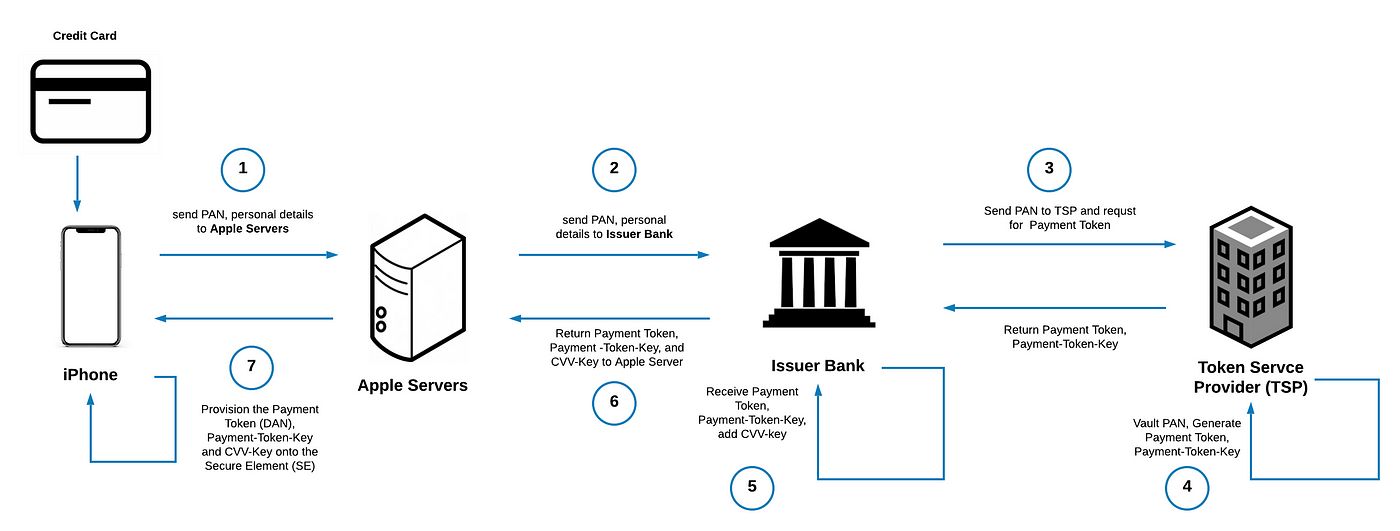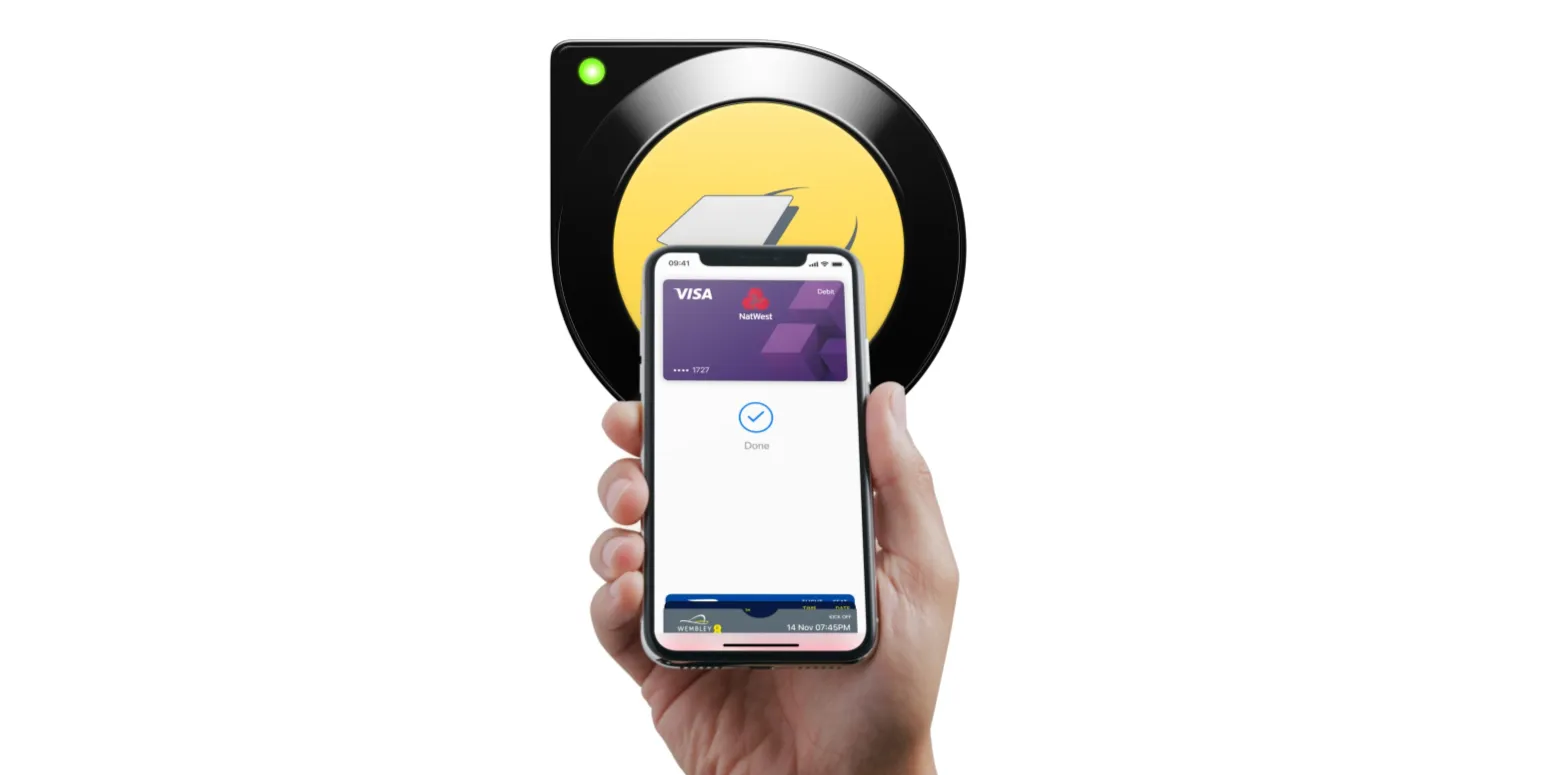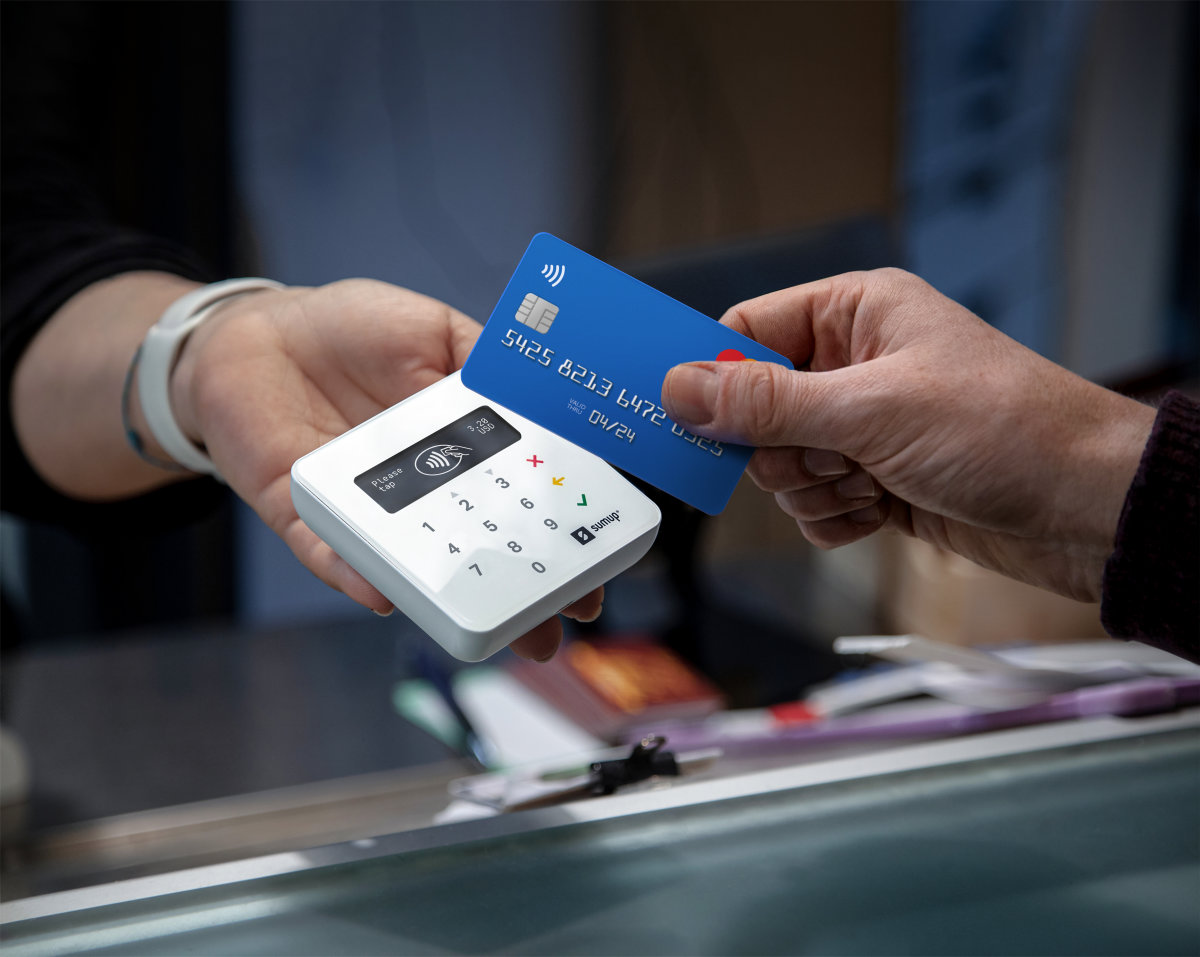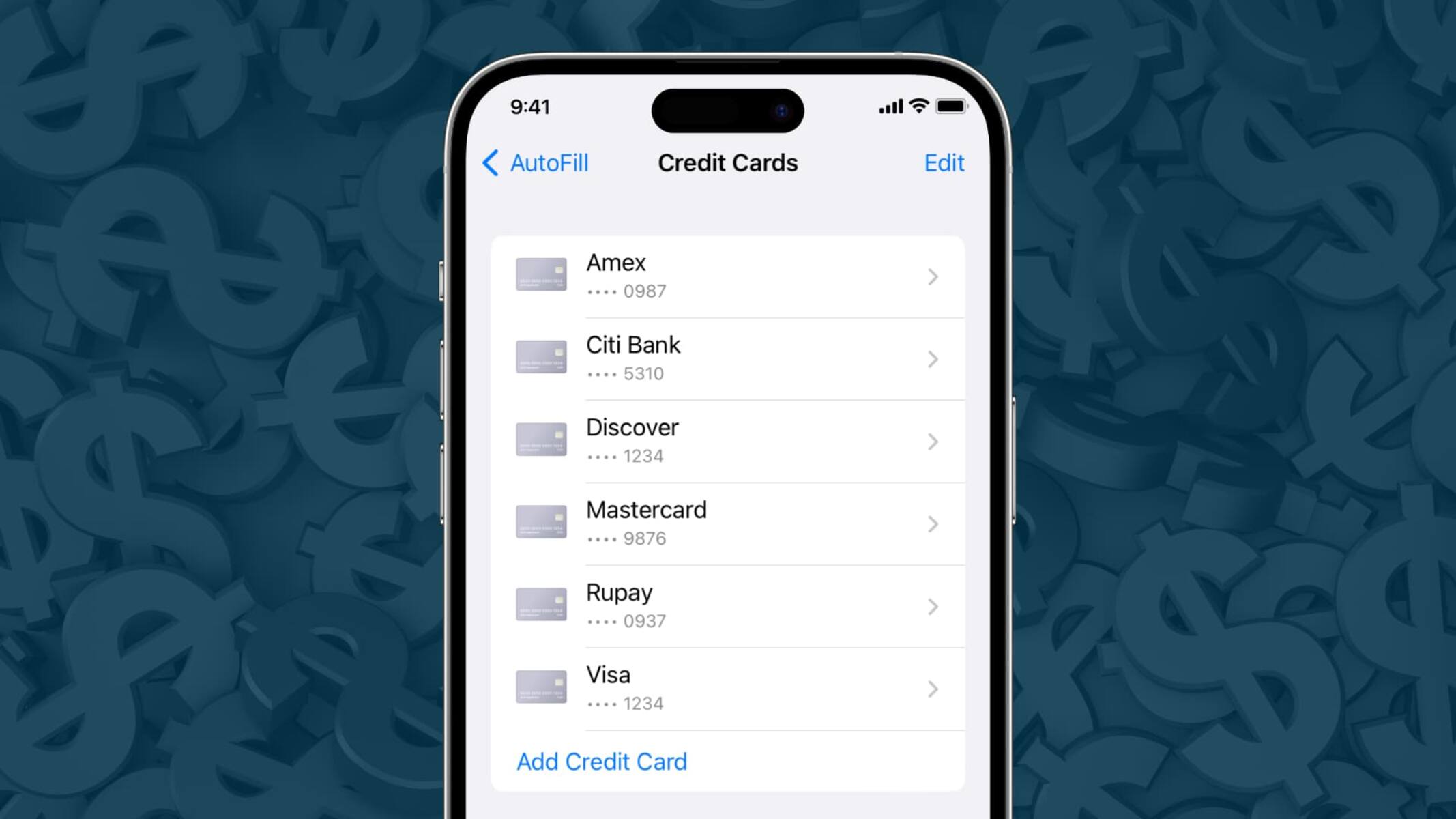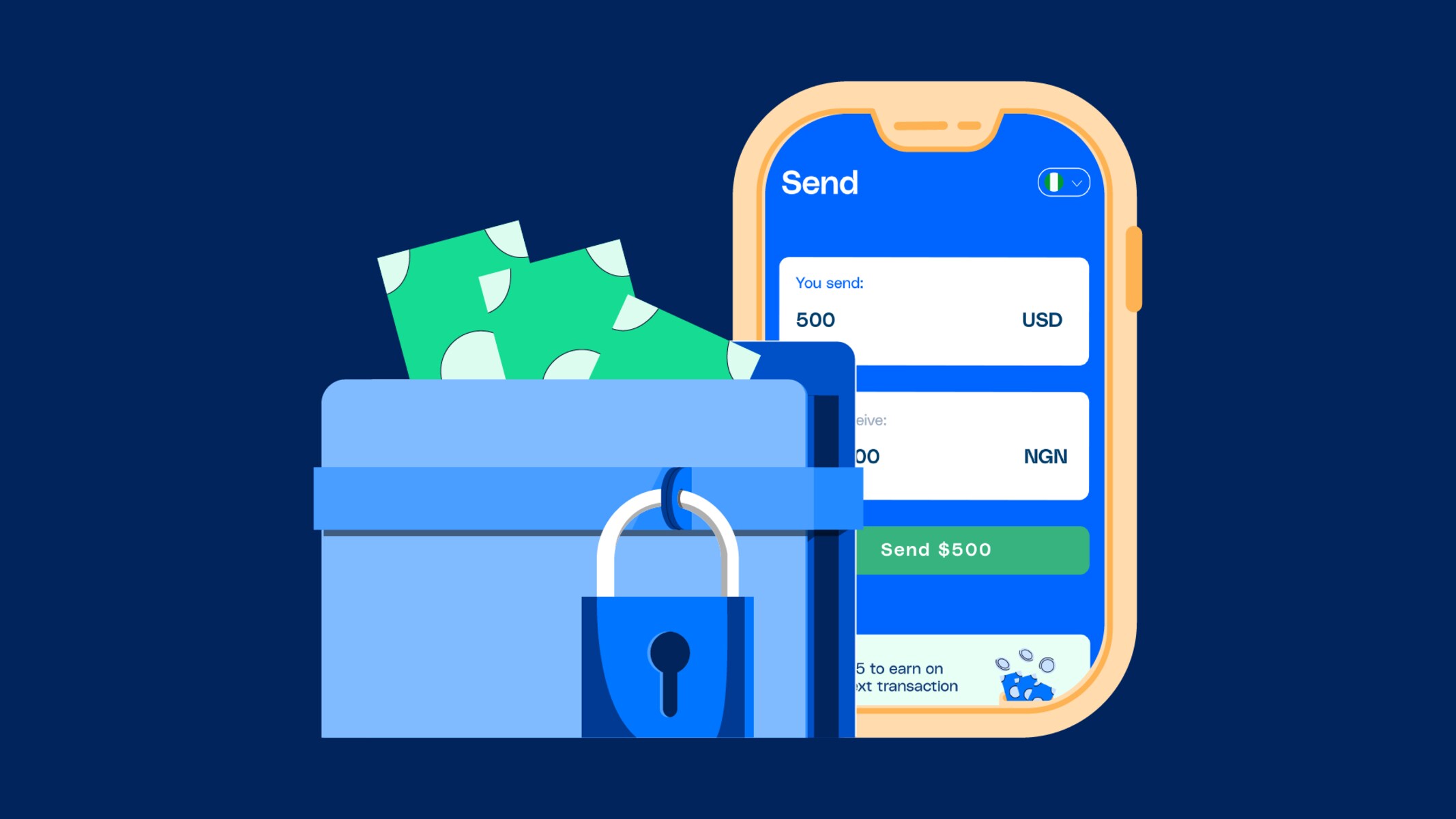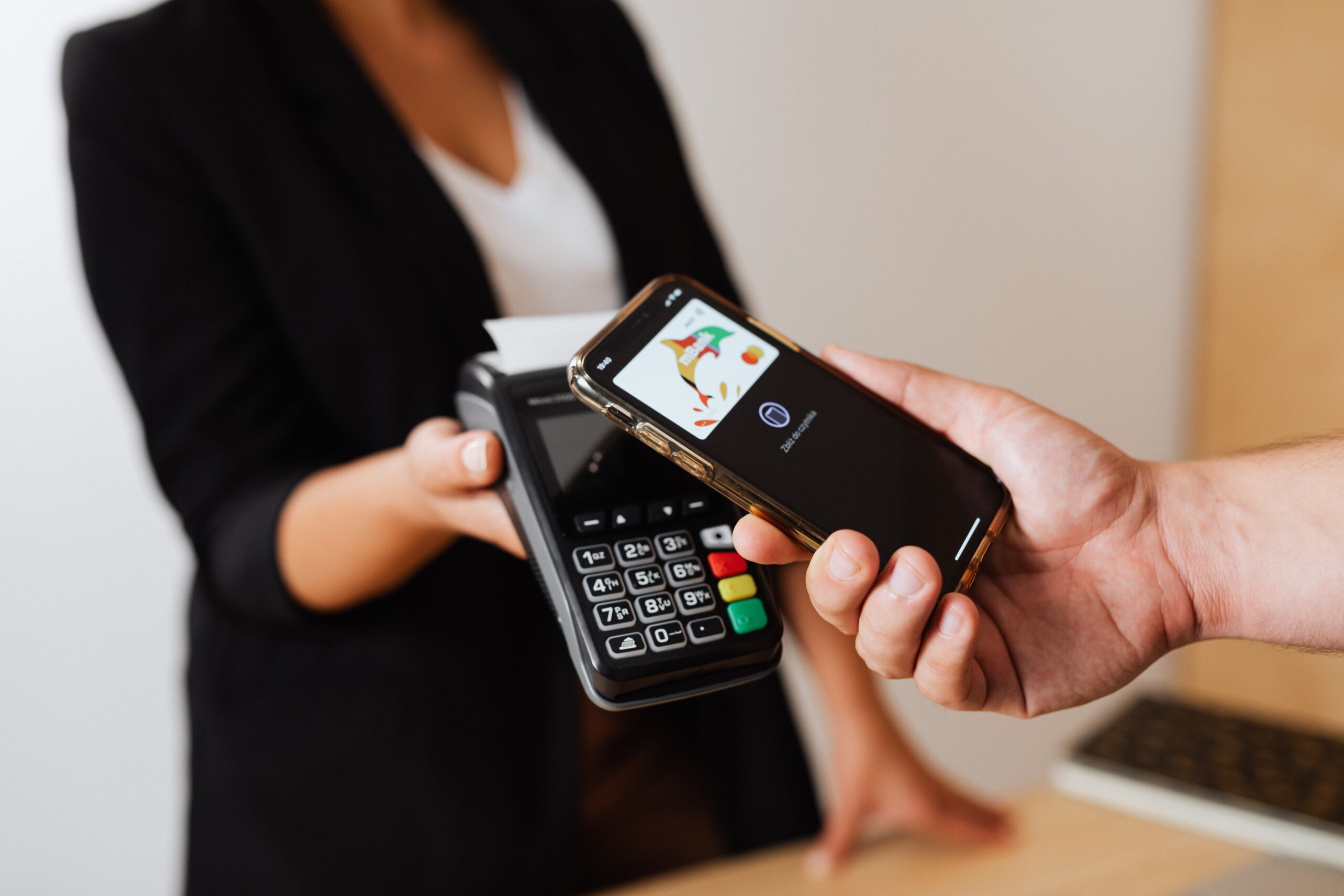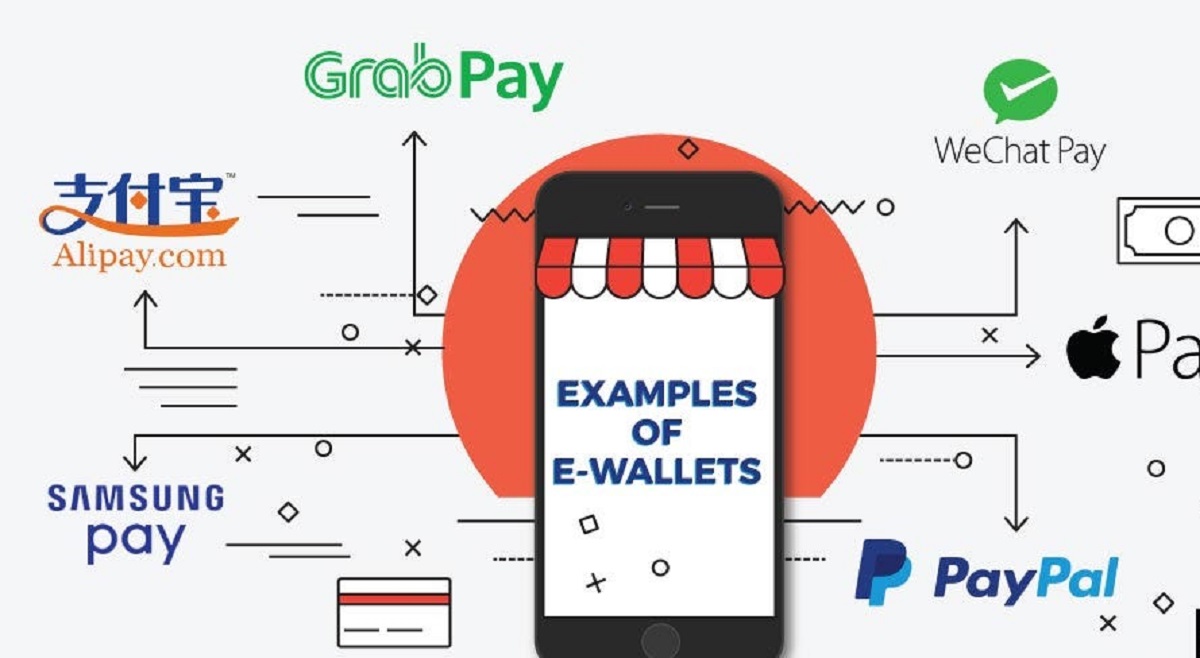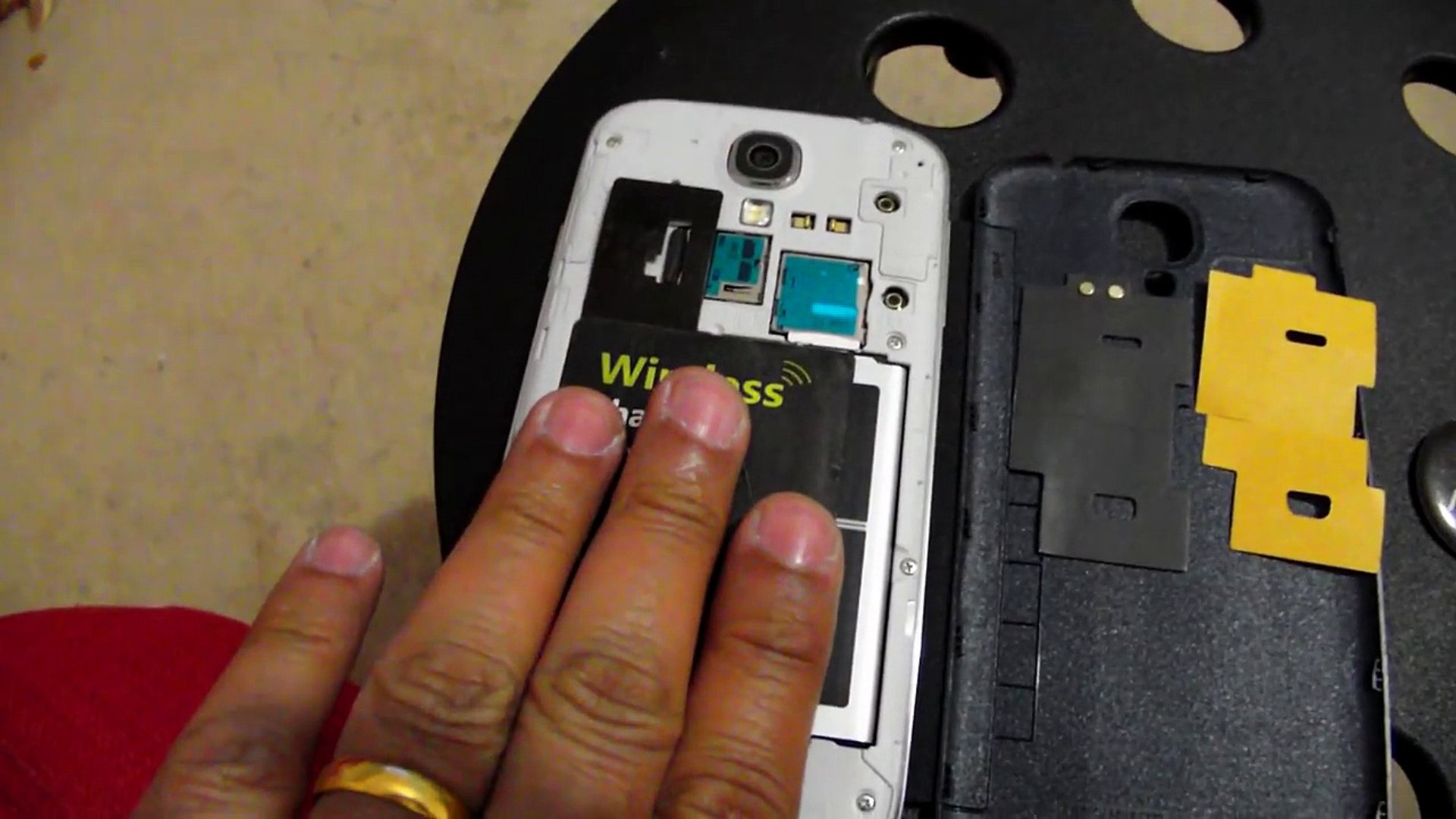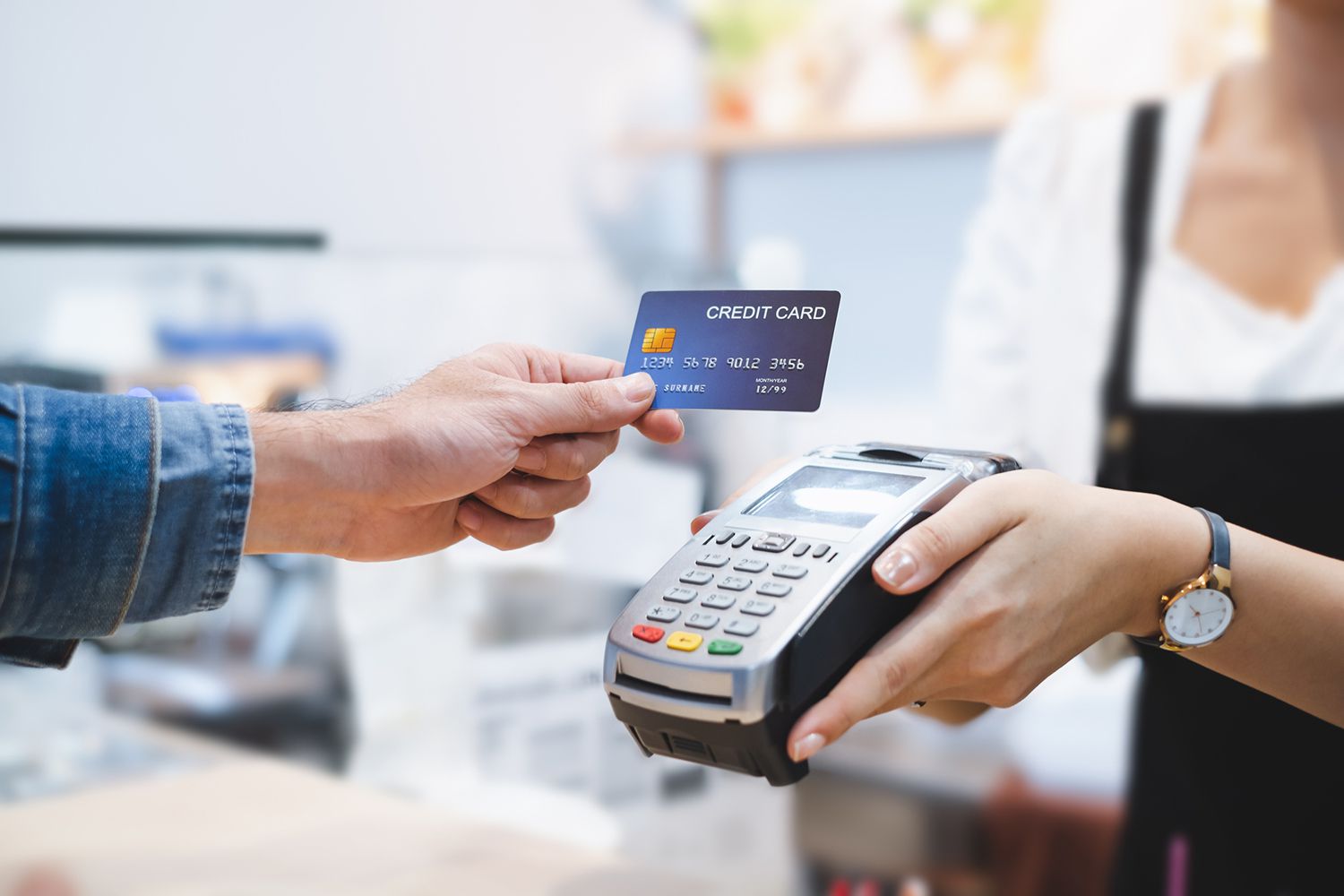Introduction
Welcome to the world of Apple Pay Tokenization, where convenience meets security. In today’s digital age, making payments has become simpler and more accessible than ever before. However, concerns about the safety of personal and financial information remain a top priority for individuals and businesses alike. This is where Apple Pay Tokenization comes into play.
Apple Pay Tokenization is a revolutionary technology that ensures the security of your payment information during transactions. It provides a layer of protection by replacing sensitive card details, such as your card number, with a unique identifier known as a token. This token is used to complete the transaction, while your actual card information remains secure and tucked away.
With the rapid growth of contactless payment methods, it is essential to have a system in place that safeguards your sensitive data. Apple Pay Tokenization offers precisely that, allowing you to make purchases with confidence and peace of mind.
In this article, we will delve into the intricacies of Apple Pay Tokenization, exploring how it works, the process involved, and the benefits it offers. So, let’s dive in and uncover the inner workings of this robust security feature provided by Apple Pay!
What is Apple Pay Tokenization?
Apple Pay Tokenization is a unique feature of Apple’s mobile payment system that ensures the security and confidentiality of your payment information. It replaces your sensitive card details, such as your card number, with a token – a randomly generated substitute. This token is used in place of the actual card information during transactions, adding an additional layer of security.
Tokenization is not exclusive to Apple Pay; however, Apple has implemented it seamlessly into their payment system to enhance user privacy and protect against fraud. By tokenizing your payment information, Apple Pay makes it exceedingly difficult for hackers and malicious actors to intercept or access your card details, as the token itself is useless outside the specific transaction.
When you add your credit or debit card to Apple Pay, the card details are encrypted and securely stored on your device. The card information is not shared with merchants or stored on Apple’s servers. Instead, a unique Device Account Number (DAN) is assigned to your device. This DAN, along with a transaction-specific token, is used to authorize payment without exposing your actual card details in the process.
Apple Pay Tokenization provides a seamless and secure experience when making purchases in-store, in-app, or online. It eliminates the need to share your card information with various merchants, reducing the risk of it being compromised. Additionally, even if a merchant’s system is compromised, the tokenized information cannot be reverse-engineered or used for fraudulent purposes.
It is essential to note that Apple does not save or transmit your card details during the transaction process. Your privacy is protected, and the security of your transactions remains a top priority.
Now that we have a clear understanding of what Apple Pay Tokenization is, let us explore how this secure payment method works.
How Does Tokenization Work?
Tokenization is a complex process, but Apple Pay makes it seamless and transparent for users. The process starts when you add your credit or debit card to Apple Pay on your device.
When you add a card, Apple Pay establishes a secure connection with the issuing bank or card network. This connection generates a unique, device-specific token that is stored securely on the device’s Secure Element (SE) – a dedicated chip that ensures the protection of sensitive information.
Once the token is created, it is linked to your specific device, meaning that the token is useless without the device itself. This device-specific token, along with the Device Account Number (DAN), is used to facilitate transactions without exposing your actual card information.
When you make a payment using Apple Pay, the token and DAN are sent to the merchant’s payment terminal or online checkout page. The merchant receives this information and completes the authorization process, just like any other payment method. However, the merchant never sees or stores your actual card details.
The token remains valid only for the specific transaction and cannot be used for any other purpose. Even if someone were to somehow intercept the token, they would not be able to use it as it is unique to your device and the specific transaction.
Apple Pay uses a cryptographic method called public key cryptography to ensure the security of your tokenized payment information. This method uses two keys, a public key and a private key, to encrypt and decrypt sensitive data. The public key is shared and used to encrypt the information, while the private key is kept securely on the device and used to decrypt the data.
Overall, the tokenization process in Apple Pay adds an additional layer of security to your transactions. It keeps your actual card information secure and only shares a unique, useless token with merchants.
Now that we know how tokenization works, let us further explore the tokenization process specifically implemented in Apple Pay.
The Tokenization Process in Apple Pay
The tokenization process in Apple Pay involves several steps to ensure the security and integrity of your payment information.
1. Adding Your Card:
When you add a credit or debit card to Apple Pay, the card details are securely encrypted and stored on the device’s Secure Element (SE). This ensures that your card information remains private and protected.
2. Generating a Token:
During the card addition process, Apple Pay establishes a secure connection with the card issuer or network. This connection generates a unique token that is associated with your specific device and card. This token is used in place of your actual card details during transactions.
3. Creating a Device Account Number (DAN):
Along with the token, Apple Pay assigns a Device Account Number (DAN) to your device. This DAN is unique to your device and is used to identify and link your card information securely. The DAN, along with the token, is sent to the merchant during transactions.
4. Transaction Authorization:
When you make a payment using Apple Pay, the tokenized information (token and DAN) is sent to the merchant’s payment terminal or online checkout page. The merchant forwards this information to the card issuer or network for authorization.
5. Approval and Completion:
The card issuer or network receives the tokenized information and validates the transaction. If the transaction is approved, the payment is authorized, and the transaction is completed, all without exposing your actual card details to the merchant.
Throughout the tokenization process, your actual card details remain secure and private. The tokenized information cannot be reverse-engineered, as it is useless outside the specific transaction. Furthermore, since Apple Pay does not transmit or save your card details, your privacy is preserved.
The tokenization process provides an added layer of security, reducing the risk of card fraud and unauthorized transactions. It allows you to make payments with confidence, knowing that your sensitive information is protected.
Now that we understand the tokenization process in Apple Pay, let’s explore the role of the Secure Element (SE) in ensuring the security of your payment information.
Secure Element (SE) and Tokenization
One of the key components in ensuring the security of tokenization in Apple Pay is the use of the Secure Element (SE). The Secure Element is a dedicated hardware chip on your device that stores and manages sensitive information, including the tokenized payment data.
The Secure Element is designed to provide a highly secure environment for storing and processing sensitive information, such as card details and tokens. It is isolated from the rest of the device’s operating system, providing an additional layer of protection against unauthorized access and tampering.
When you add a card to Apple Pay, the card details are encrypted and securely stored within the Secure Element. The tokenization process generates a unique token that is linked to the card details stored in the SE. This ensures that the tokenized payment information is kept secure and can only be accessed by authorized parties.
During a transaction, when the token and Device Account Number (DAN) are sent to the merchant, they are securely transmitted from the Secure Element. The tokenized information is decrypted within the SE and transmitted in an encrypted form to the merchant’s payment terminal or online checkout page.
The use of the Secure Element adds an extra layer of protection to the tokenized information. It provides a secure storage environment for the card details and ensures that the tokenization process is securely executed. This helps prevent unauthorized access or tampering with the tokenized payment data.
Apple incorporates several security measures to protect the Secure Element. This includes encrypting the communication between the Secure Element and the device’s operating system, requiring user authentication (such as Face ID, Touch ID, or passcode) to access the Secure Element, and implementing robust hardware and software security mechanisms.
By utilizing the Secure Element in conjunction with tokenization, Apple ensures that your payment information remains secure throughout the transaction process. The combination of tokenization and the Secure Element adds a strong layer of protection against fraud and unauthorized access, giving you peace of mind when using Apple Pay.
Now that we’ve explored the role of the Secure Element in tokenization, let’s move on to discussing the advantages of Apple Pay Tokenization.
Advantages of Apple Pay Tokenization
Apple Pay Tokenization offers several advantages that make it a secure and convenient payment method for users:
1. Enhanced Security: Tokenization adds an additional layer of security to your payment transactions. By replacing your card information with a unique token, Apple Pay ensures that your sensitive details remain protected, reducing the risk of card fraud and unauthorized access.
2. Privacy Protection: With Apple Pay, your card details are not stored or shared with merchants. The tokenized information keeps your actual card number and personal data private, minimizing the chances of your information being compromised in case of a data breach.
3. Convenient and Contactless Payments: Apple Pay allows you to make payments with just a tap or glance using your iPhone, Apple Watch, or other compatible devices. It eliminates the need to physically present your card or enter your card details, offering a seamless and convenient payment experience.
4. Wide Acceptance: Apple Pay is widely accepted by a growing number of merchants, both in-store and online. With an increasing number of retailers and service providers adopting Apple Pay, you have the convenience to use it in a variety of places, from coffee shops to e-commerce sites.
5. Ease of Use: Adding your cards to Apple Pay is a simple process. With just a few taps, you can securely link your credit or debit card to your device and start using Apple Pay right away. The intuitive user interface makes it easy to manage your cards, view transactions, and change payment methods as needed.
6. Versatile and Secure Authentication: Apple Pay supports various authentication methods, including Face ID, Touch ID, and passcode. These biometric or personal identification measures add an extra layer of security, ensuring that only you can authorize payments using your device.
7. Integration with Other Apps: Apple Pay is integrated with various apps, allowing you to make quick and secure payments within those platforms. Whether you’re ordering food, booking a ride, or purchasing tickets, Apple Pay simplifies the checkout process and provides a secure payment option.
8. Global Availability: Apple Pay is available in numerous countries around the world, making it a convenient payment method whether you’re at home or traveling abroad. It allows you to make secure purchases without the hassle of carrying physical cards or dealing with foreign currency.
By leveraging the benefits of tokenization coupled with its user-friendly interface and robust security measures, Apple Pay offers a safer and more convenient way to make payments in today’s digital world.
Now that we have explored the advantages of Apple Pay Tokenization, let us discuss the limitations of this payment method.
Limitations of Apple Pay Tokenization
While Apple Pay Tokenization offers significant advantages, it is important to be aware of its limitations:
1. Device and Platform Dependency: Apple Pay Tokenization is available only on Apple devices, such as iPhones, iPads, Macs, and Apple Watches. This means that users with non-Apple devices are unable to benefit from this payment method. Additionally, Apple Pay may not be supported by all merchants or apps, limiting its availability in certain situations.
2. Card Compatibility: Not all credit or debit cards can be added to Apple Pay. The compatibility of cards depends on the card issuer and the region. Some cards may not support tokenization, preventing their use with Apple Pay. It is important to check with your card issuer to ensure compatibility before attempting to add your card to Apple Pay.
3. Merchant Acceptance: While Apple Pay is widely accepted, especially at major retailers, smaller merchants may not have the infrastructure in place to support this payment method. This can limit your ability to use Apple Pay in specific locations or for certain purchases. Checking with the merchant beforehand can help determine if they accept Apple Pay.
4. Security Vulnerabilities: While tokenization enhances security, no system is entirely foolproof. While tokenized card details are safe, other aspects of a transaction, such as the merchant’s payment processing system, could still be vulnerable to security breaches. It is essential to choose reputable merchants and ensure they have robust security measures in place to protect the integrity of your entire transaction.
5. Network Connectivity and Device Issues: Apple Pay relies on network connectivity to authorize and process payments. If you have a poor network signal or encounter technical issues with your device, it may hinder the smooth functioning of Apple Pay. Additionally, if your device is lost or stolen, ensuring the security of your tokenized payment information becomes paramount.
6. Limited Adoption in Some Regions: While Apple Pay is available in many countries, its adoption may still be limited in certain regions. This can restrict your ability to use Apple Pay when traveling or conducting business in countries where it is not widely supported.
Despite these limitations, Apple Pay Tokenization remains a popular choice for users who prioritize security, convenience, and privacy in their payment transactions. Understanding these limitations can help you make informed decisions about when and where to use Apple Pay.
Now that we have explored the limitations of Apple Pay Tokenization let’s conclude our discussion.
Conclusion
Apple Pay Tokenization is a powerful and secure payment method that provides users with a seamless and protected way to make transactions. By replacing sensitive card details with unique tokens, Apple Pay ensures the confidentiality and integrity of your payment information.
Through the tokenization process, Apple Pay enhances security by keeping your actual card information hidden and minimizes the risk of fraud and unauthorized access. The integration of the Secure Element further fortifies the protection of tokenized payment data.
With Apple Pay, you can enjoy the convenience of contactless and secure payments, without the need to physically present your card or share your card details with merchants. Apple Pay is widely accepted at various merchants, both online and in-store, and offers a convenient and private way to complete transactions.
While Apple Pay Tokenization offers numerous advantages, it is essential to note its limitations, such as device and platform dependency, limited card compatibility, and merchant acceptance. Remaining aware of these limitations can help you navigate the potential challenges when using Apple Pay.
In conclusion, Apple Pay Tokenization revolutionizes the way we make payments, striking a delicate balance between security, convenience, and privacy. By utilizing tokenization technology and the robust security measures implemented by Apple, you can have peace of mind knowing that your payment information is protected during transactions.
Whether you are buying a cup of coffee, shopping online, or traveling internationally, Apple Pay Tokenization empowers you to make secure and hassle-free payments with just a simple tap or glance, ensuring a seamless and secure payment experience.







